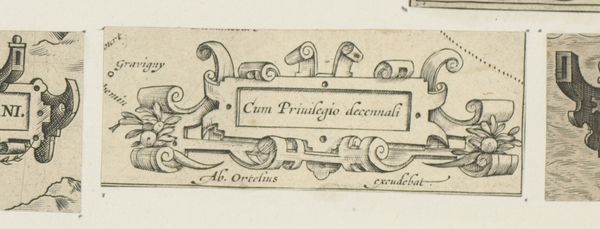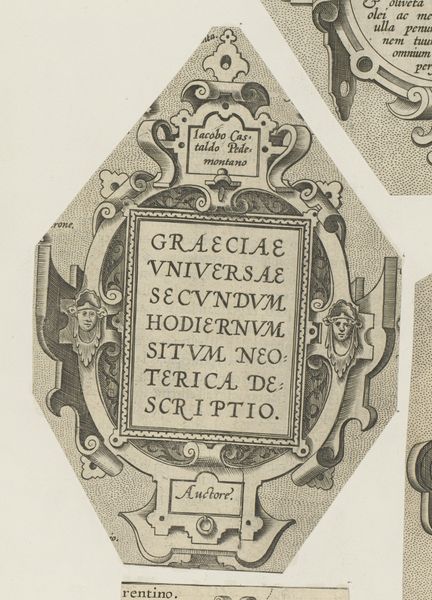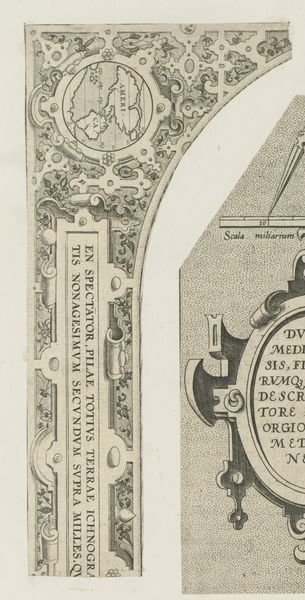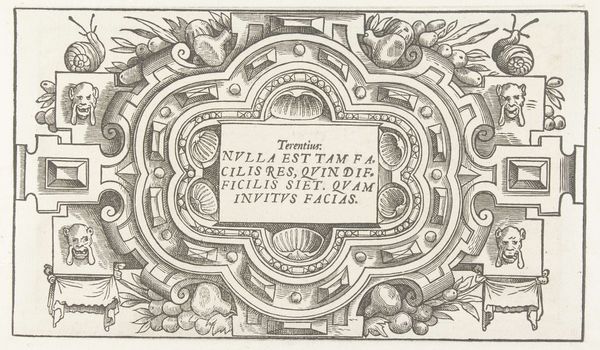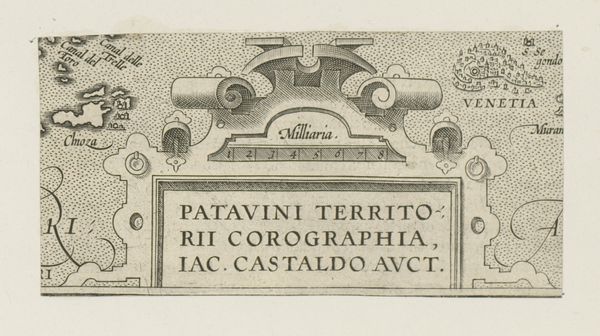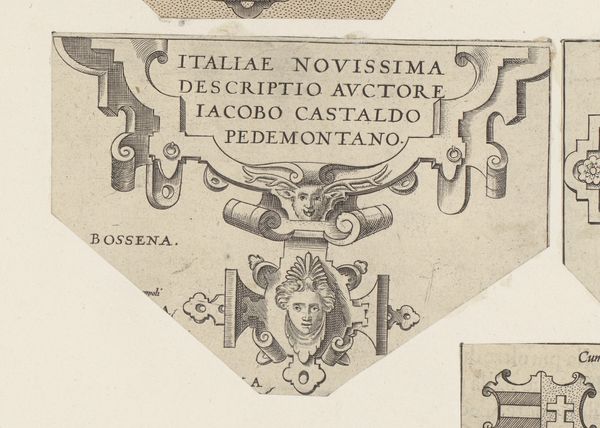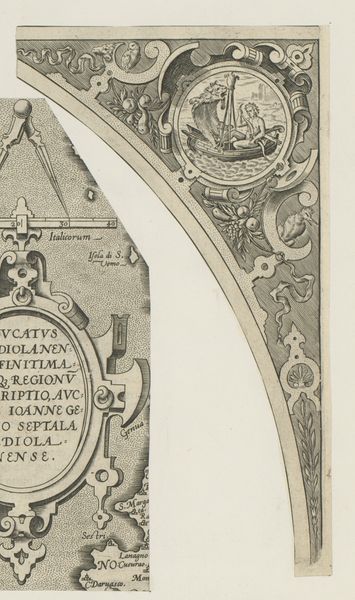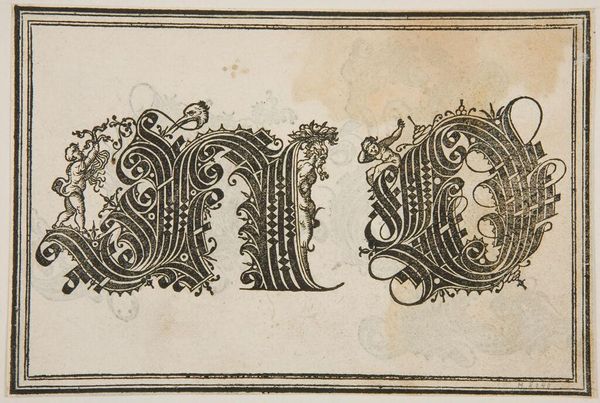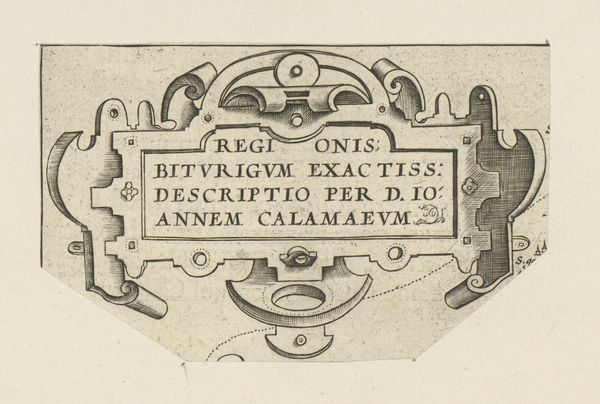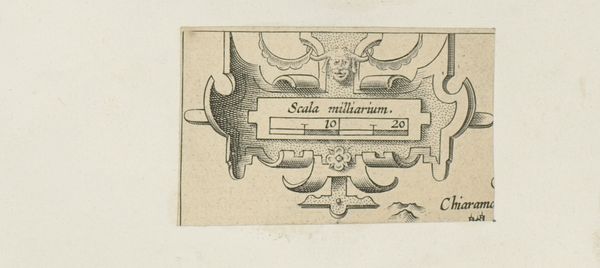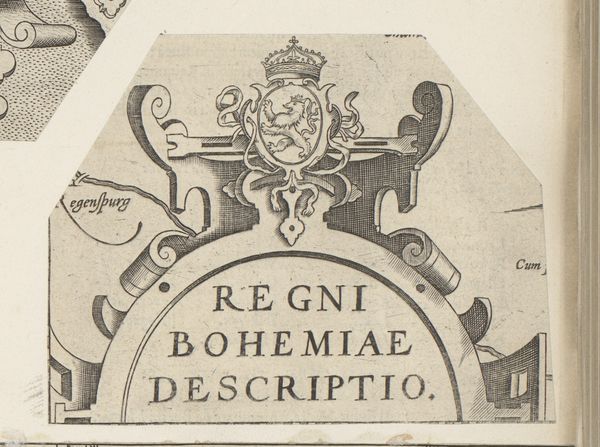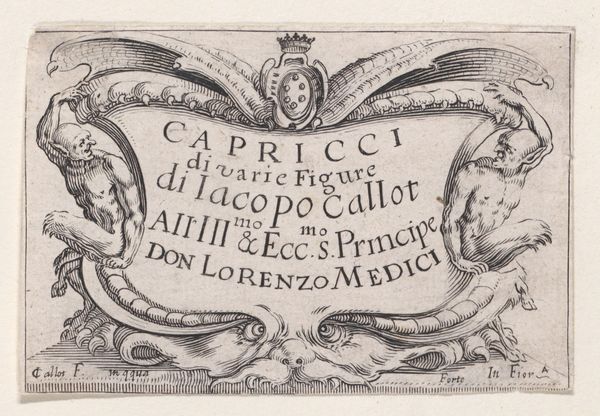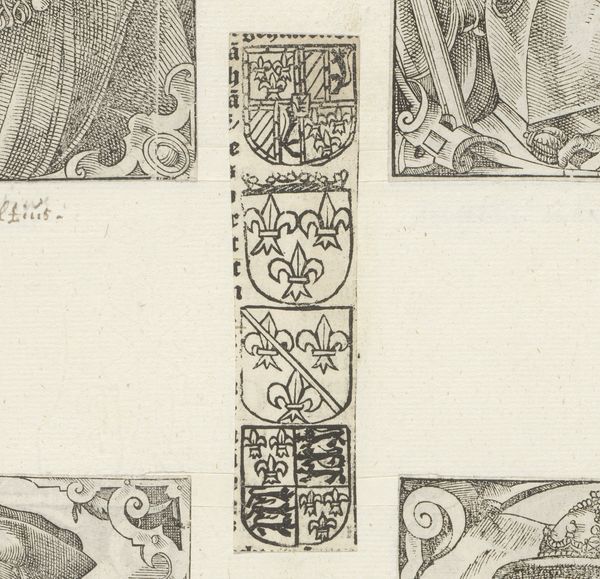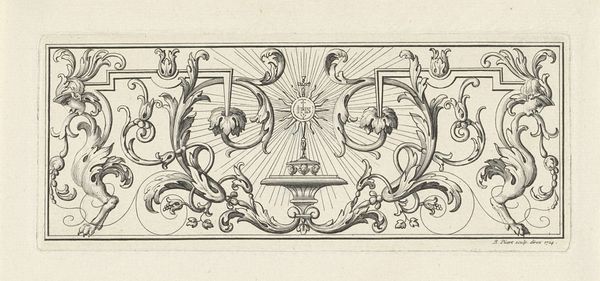
graphic-art, print, typography, engraving
#
graphic-art
# print
#
old engraving style
#
11_renaissance
#
typography
#
history-painting
#
engraving
Dimensions: height 51 mm, width 182 mm
Copyright: Rijks Museum: Open Domain
Curator: Here we have a 1579 engraving titled "Langwerpige cartouche met trossen fruit," or "Elongated Cartouche with Bunches of Fruit," created by an anonymous artist. Its design, typical of Renaissance printmaking, combines typography with decorative elements. Editor: Immediately, the meticulous labor involved in such a precisely detailed work jumps out. What tools would have been required to incise such delicate lines onto the printing plate? And, considering the time it would take, what class of consumer would purchase such images? Curator: Well, look closely. Note the lettering—"POICTOV" and above it "Septemtrio"—set against the highly stylized border of the cartouche, which, yes, features meticulously rendered bunches of fruit. The linear precision, the calculated balance between text and image… it's a masterclass in Renaissance formalism. Editor: True, but even the composition serves the message. Consider how these ornamented borders support and elevate the central text; or perhaps even serve to visually authorize "POICTOV" itself—likely a place or province? The very act of printing allows it to be multiplied and distributed, carrying a symbolic value linked to emerging notions of place and territory. Curator: Certainly. And what makes it a compelling work of art is not just its functionality, but the artist's careful arrangement of space and form. Observe the use of symmetry, the subtle variations in line weight. How the ornamental details lead the eye to the central word and anchor the work in its Renaissance visual lexicon. Editor: That’s exactly my point: the mode of production is central! An engraving isn't spontaneously generated—it’s constructed. Each stage involves choices and craft from the engraver as artisan and disseminator of information. What materials were chosen for permanence and replicability, how does this then feed the emerging market for printed material? Curator: All important facets, to be sure. Yet in its exquisite rendering, and considered design, the print transcends utility. It reminds us of the power of artistic formalism to distill and express the values of an age. Editor: Agreed; though its materials also offer tangible evidence of labor practices. We need to consider those human relationships that bind artist to artifact and the world they help represent.
Comments
No comments
Be the first to comment and join the conversation on the ultimate creative platform.
